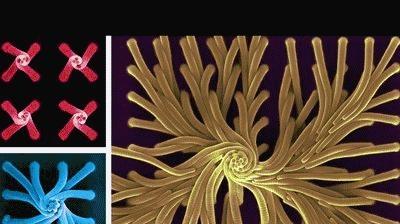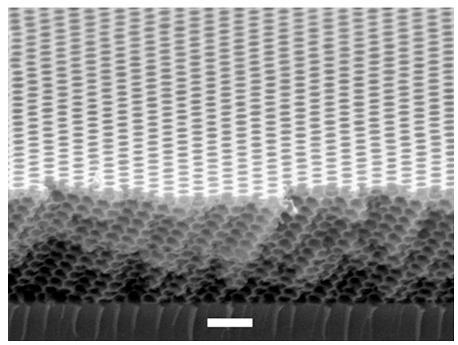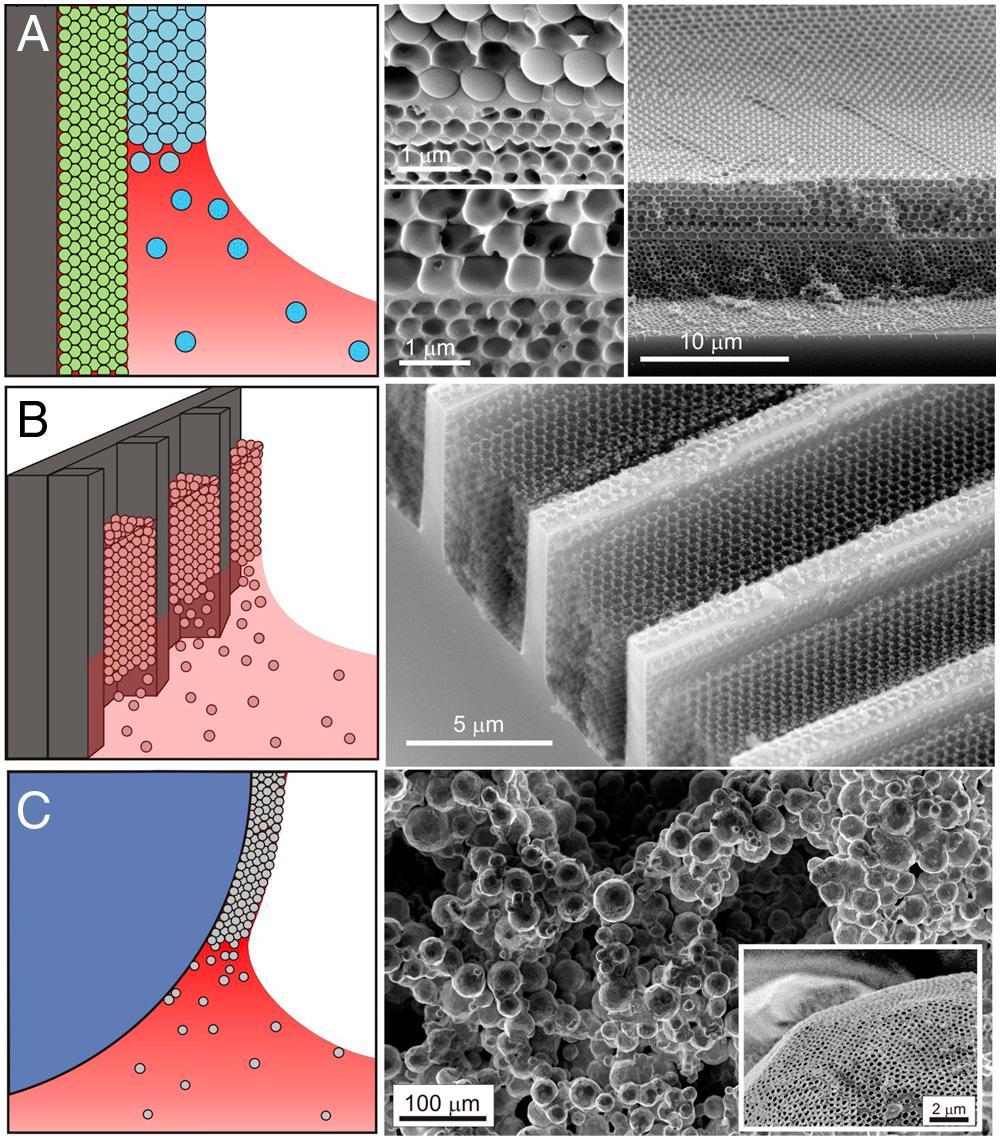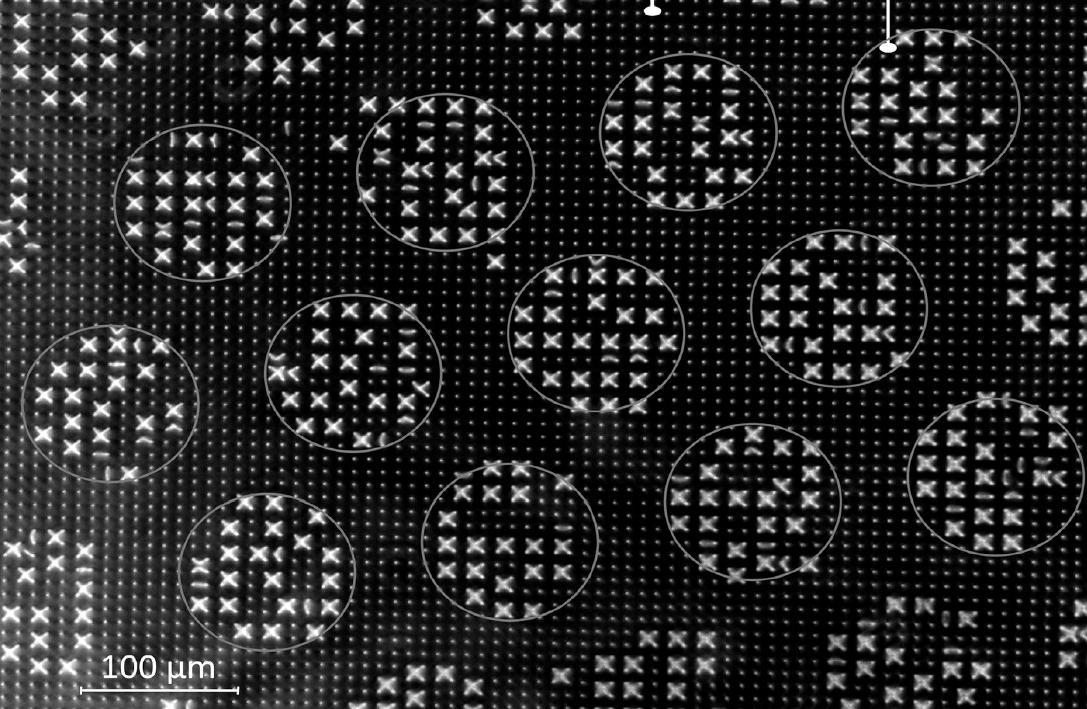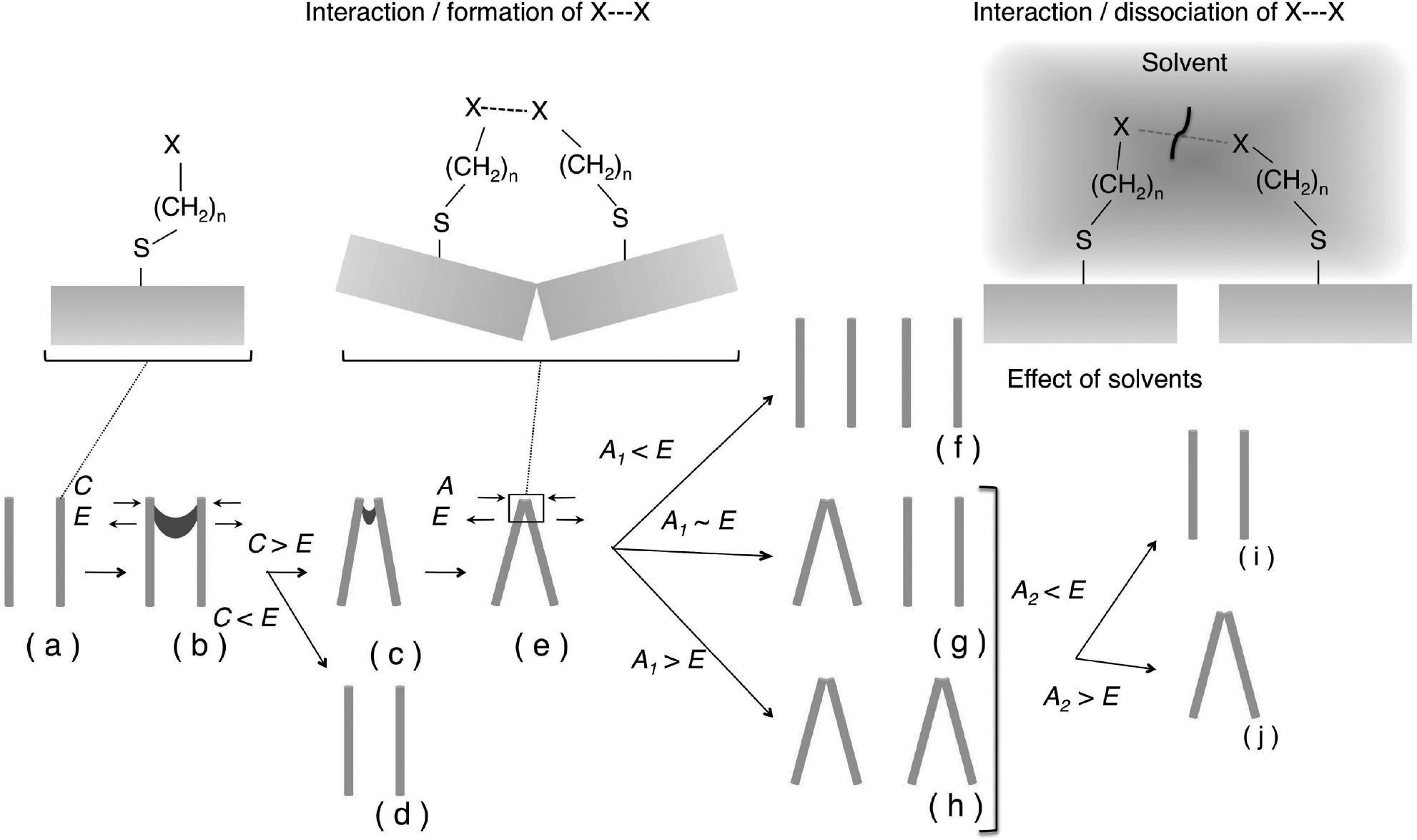Living systems are compelling evidence that multi scale, adaptive architectures can be built simply by letting their smallest parts self-organize as dictated by their intrinsic properties.
Self-assembly
Efforts to explain the mystery of self-assembly have ranged from “collective thinking” within continuously reconfiguring bird flocks to sophisticated algorithms describing how chains of local interactions can give rise to bacterial communities and cellular machinery. Yet we have little understanding of how to systematically encode such interactions directly into physical building blocks to track and control their assembly into arbitrary, dynamic structures, particularly at the nanoscale.
Using periodic nanofiber arrays as both a model system and a starting point for fabricating optical, adhesive, and microfluidic materials, our group has demonstrated and developed a predictive theory for how to create elaborate helical, hierarchical structures simply by tweaking the mechanical, chemical, and geometric features of the fibers. Intriguingly, step-by-step examination of the process revealed an unexpected concept: the final structure is achieved through hierarchical stages of not only assembly but also disassembly.
Our continuing analysis of this latter phase suggests how, with a comprehensive understanding of the forces at play, building block features can be used to program selective, inducible top-down self-disassembly steps, giving the assembled structures a wide variety of dynamic, reversible, responsive behaviors. Yet another surprising self-assembly principle has come from our recent work on colloids: we have discovered that letting two different sets of building blocks co-assemble from the bottom up can enhance the long-range order of each by mutual correction of defects, and this too has led us to explore a new realm of possibilities for bottom-up creation of hierarchical architectures.
- 1 of 3
- »
